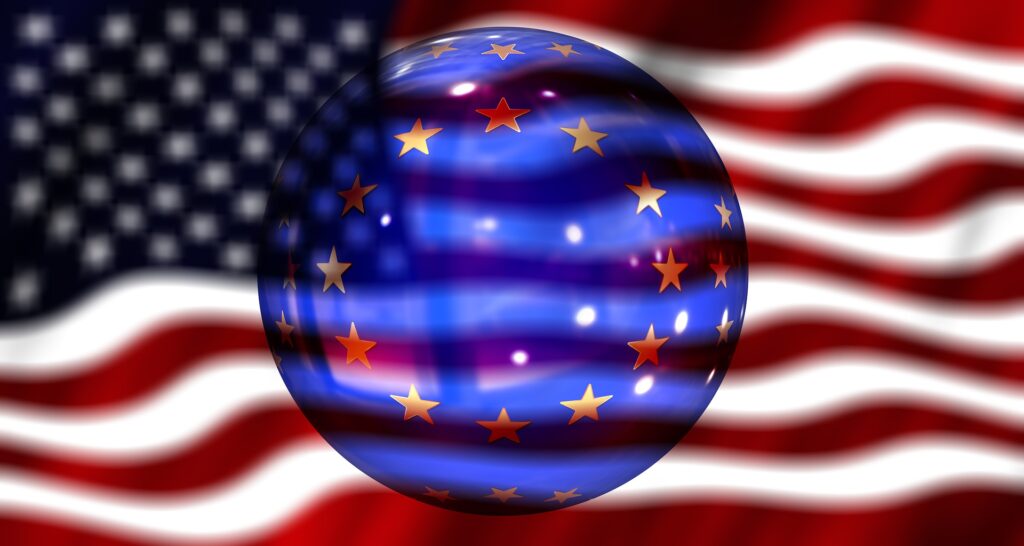Global Avionics Round-Up from Aircraft Value News (AVN)

In the high-stakes arena of international diplomacy, tariffs and trade threats rarely remain confined to spreadsheets and customs booths. This year, when President Donald Trump threatened fresh tariffs on European Union exports, much of the media attention focused on agriculture, luxury goods, and cars.
But quietly, and with potentially long-lasting consequences, these tensions are rattling one of the most sensitive corners of the aerospace industry: avionics.
The avionics industry has become one of the most intricate and globally interconnected sectors in aviation. Unlike engines or airframes, where a handful of dominant players control the space, avionics rely on a dense network of multinational partnerships, cross-licensing agreements, and real-time technological co-development. Many avionics suppliers are smaller-cap tech companies that don’t have brand name recognition.
Now, with the reemergence of protectionist rhetoric, particularly from the Trump regime, the risk of economic nationalism interfering with avionics development is no longer theoretical.
The E.U. and the U.S. are historically interdependent when it comes to building cockpits. Consider that Thales, the French electronics giant, supplies cockpit displays to Boeing, while Honeywell and Collins Aerospace—U.S. titans—power major Airbus systems.
The very nature of avionics collaboration is rooted in decades of transatlantic engineering trust and shared standards. Disrupt that flow, and the consequences ripple far beyond supply chains.
As tariffs materialize and bilateral tensions escalate into regulatory divergence, the cockpit could become collateral damage in a trade war that neither side can afford. European manufacturers might be pressured to localize supply chains or pivot toward domestic partners to mitigate tariff risks. That could mean Thales or Leonardo pushing to reduce their dependency on U.S. chips or software modules.
Likewise, American giants like Honeywell might see increasing pressure from Washington to “buy American” and recalibrate avionics development away from European integration. But that would be both costly and regressive.
Modern cockpits, especially in next-gen aircraft like the Airbus A321XLR or Boeing’s 777X, are not simple plug-and-play consoles. They are the result of years of international Research and Development (R&D), where flight management systems must conform to requirements from both the U.S. Federal Aviation Administration (FAA) and the European Union Aviation Safety Agency (EASA).
The Erosion of Trust
The widening gulf between U.S. and E.U. regulatory frameworks, driven by a more protectionist trade posture, complicates dual certification and leads to longer lead times, higher costs, and ultimately, lower safety margins. In aviation, delays are not just about time. They’re about trust.
There’s also the real possibility that retaliatory tariffs from Brussels could make U.S. avionics less competitive globally. If European OEMs—especially Airbus, ATR, or even the rising COMAC partners in China—find it costlier to procure American avionics, they may seek alternatives from European or Asian suppliers.
Trump’s shattering of transatlantic cooperation has already frayed nerves in aerospace circles. For avionics, which now represent a growing share of aircraft value (sometimes up to 30% in military platforms), that’s a ticking time bomb.
Avionics innovation also depends heavily on seamless data flow and joint research. Programs like Single European Sky ATM Research (SESAR) in Europe and NextGen in the U.S. are designed to modernize air traffic control and cockpit integration.
These initiatives rely on data harmonization, synchronized upgrade cycles, and common interoperability standards. If geopolitics splinters these efforts into region-specific silos, the world could face a divided sky, where aircraft optimized for U.S. or E.U. airspace become less efficient or even incompatible when flying transcontinental routes.
The effect on military avionics is poised to be even more profound. NATO allies have traditionally shared electronic systems for fighter jets, drones, and surveillance aircraft. If Trump’s America First doctrine makes it harder to export sensitive avionics tech to European partners or imposes bureaucratic hurdles, joint defense programs could splinter. That would undermine collective security while opening a window for China or Russia to deepen their own bilateral military tech ties in areas where the West should dominate.
Unlike fuselage makers or engine OEMs, avionics companies operate in an environment of razor-thin margins and long development timelines. Uncertainty around tariffs or cross-border licensing raises their risk profiles and deflates corporate valuations, especially for firms with high European exposure.
This article originally appeared in our partner publication, Aircraft Value News.
John Persinos is the editor-in-chief of Aircraft Value News.